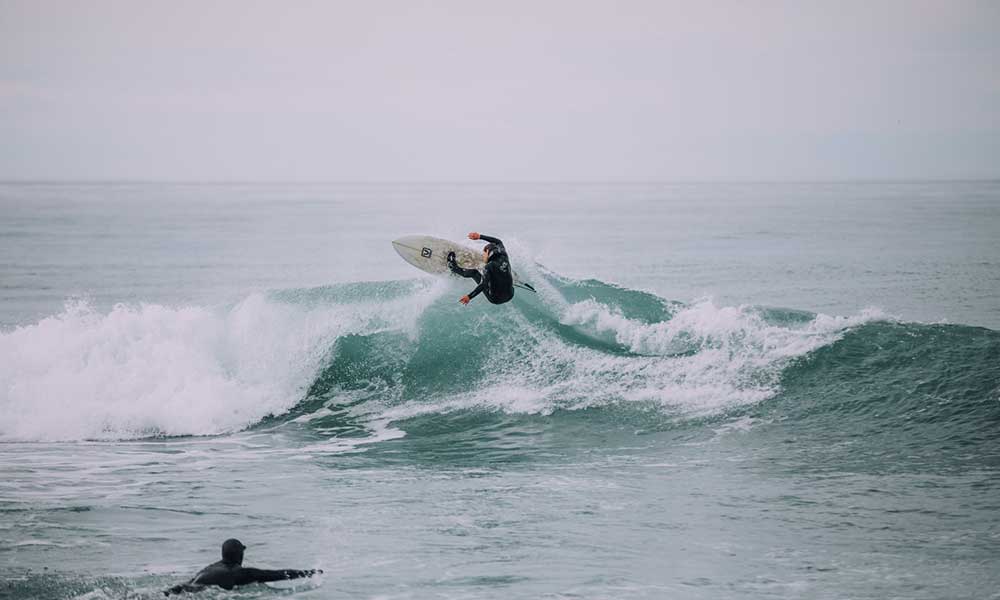The type of surfboard that you ride will impact your speed on the waves.
The width, length, rocker, and surf fins all play a role in generating speed, but you can’t expect the board to do all of the work.
The way you position your front foot and back foot, as well as how you move your body, can also impact your speed.
In this guide, we’ll look at the reasons that you lose speed when riding waves and the things you can do to generate more power.
Why You Lose Speed on a Wave
If you outrun the wave and surf far down the line, you’ll lose speed.
Beginner surfers also lose a lot of speed by placing too much pressure on the back of the surfboard or digging the rails in.
As noted above, the surfboard itself, along with the fins, could be causing you to lose speed.
However, the differences here are usually slight, at best.
Unless you’re trying to speed over short and choppy waves in a shortboard or using another surfboard type that just isn’t suitable for the occasion, the differences are unlikely to be significant.
Tips for Generating Speed
There are a few things you can do to hold onto the energy of the wave and maintain strong line speed over it, including:
Pump the Surfboard
Pumping is a fluid movement across the wave face that helps you to generate speed.
The top third of the wave is where all the speed comes from and if you place your back foot on the tail and keep enough pressure on the front to avoid stalling, you can accelerate as it dips down the face of the wave.
Push with your front foot and apply pressure to the inside rail to move up the face of the wave, at which point you can transfer to the outside of the rail and slide back down.
Bouncing Your Body and Surfboard
Bouncing is great for generating speed in small waves.
Move your weight to your back foot to lift the nose of the surfboard out of the water and then shift to your front foot, “bouncing” along the wave.
Other Tips for Generating Speed
- Stay on the top third of the wave. This is where you’ll generate the most speed.
- When making turns across the face of the wave, start high so that you can accelerate down.
- Surf from rail to rail where possible as you’ll generate more speed than surfing from nose to tail.
- Make sure you angle your take off down the line and don’t simply aim for the shore (an error that many beginner surfers make).
Learn More
If you’re struggling with the basics, it could be time for a few surf lessons or a surf camp or a surf coach.
It can make a massive difference to your skill level and will teach you some of the essential maneuvers, tricks, and techniques that you need to gain speed and stay in control.
You’ll learn about wave direction, surfboard type, power generation, control, foot placement, body movements, and general surfboard control.







